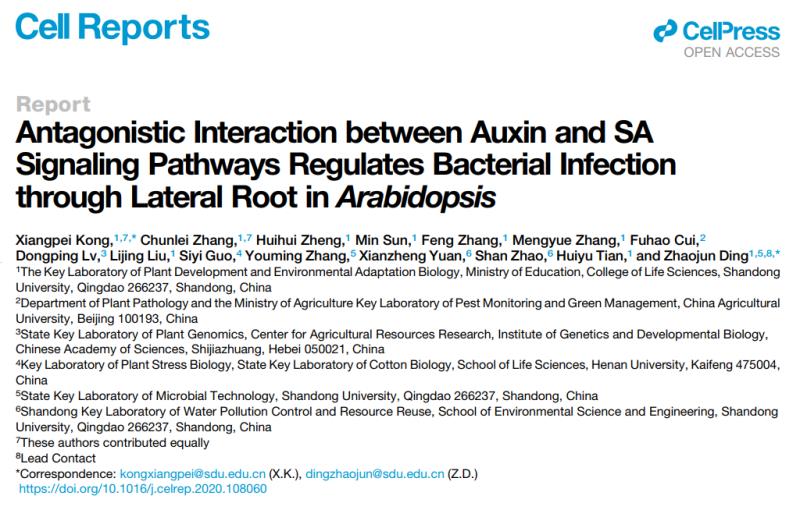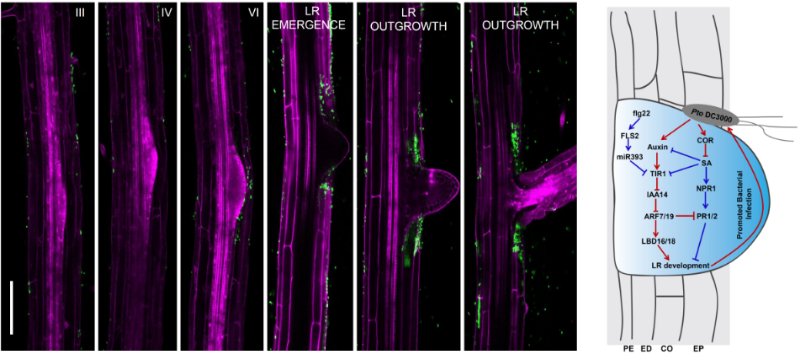Prof. Zhao-Jun Ding’s group at school of life sciences, Key Laboratory of Plant Development and Environmental Adaptation Biology, Ministry of education, Shandong University, published a paper entitled "Antagonistic interaction between auxin and SA signaling pathways regulations bacterial infection through lateral root in Arabidopsis" in Cell Reports. Assistant researcher Xiang-Pei Kong and postdoc Chun-Lei Zhang are the co-first authors and Prof. Zhao-Jun Ding and assistant researcher Xiang-Pei Kong are the co-corresponding authors.

Plant pathogens deploy a variety of sophisticated strategies to invade their hosts where they obtain nutrients and water for their growth. Plant surfaces, such as stomata, provide entry sites for pathogens. It has been reported that stomata play an important role in limiting bacterial invasion as part of the plant innate immune system.
Besides anchoring plants into the soil, plant roots are important for the uptake of water and nutrients and, therefore, play a fundamental role in plant growth and development. The plant root rhizosphere is densely populated by microorganisms, including fungi, bacteria, and nematodes. It has been reported that theArabidopsisimmune receptor kinase FLAGELLIN-SENSING 2 (FLS2) is mainly expressed in the stele, starting at the root differentiation zone and outgrowing lateral roots (LRs), and flagellin 22 (flg22) can also trigger pattern-triggered immunity (PTI) responses in root, indicating that the root acts as an important part of plant innate immune system.
The LRP emerges through the overlaying endodermal, cortical and epidermal cell layers to form a lateral root. Here, using GFP-labeled pathogenic bacterium Pseudomonas syringae pv. tomato strain DC3000 (Pto DC3000), the authors unveiled that the virulent Pto DC3000 invaded plants through emerged LRs inArabidopsis. Interestingly, the authors observed that pathogens, such as Pto DC3000, strongly induced LR formation, a process that was dependent on ARF7/ARF19-LBDs mediated-auxin signaling. In addition, the phytotoxins coronatine (COR) and type-III-secretion-system effectors (T3SEs) are involved in P. syringae-triggered LR development. On the other hand, the plant defense hormone SA inhibits LR formation through ARF7. Overexpression of PR1 and PR2 partially blocked the Pto DC3000-induced LRE. The authors also showed that ARF7 proteins directly bind to the promoters of PR1 and PR2 and repress the transcription of these two genes.

Taken together, these results highlight the antagonistic interaction between auxin and SA signaling pathways in lateral root development and their roles in controlling bacterial infection through lateral root.